|
It's been a while since I posted a fish update. I've been putting it off because it doesn't make for good reading. I lost my Helfrichs firefish in September last year, I'd kept him for just over a year. There was no obvious cause, he just ate less and less until he eventually passed away. At the time I put it down to just one of those things. All was well for the next 4 months but then my Rainfords goby started to go downhill in the same manner, he began eating less and less till he too died at the end of January. I'd kept him for just under 2.5 years. He was a big fish, almost certainly fully grown and perhaps it was just his time, but still I did wonder if the bullying by Yellow wrasse was somehow related. There wasn't any actual fighting just a bit of posturing every now and again but it might have been extra stress that he could have done without. Then three weeks later I also lost my beloved Pink Streaked wrasse. I'd kept her for just over 4 years, according to information found on the internet the average lifespan of these small wrasse is 4-5 years so it's quite likely that she did just die from old age. The following month I lost one of the pair of Blackbarred gobies, it too stopped eating and died. Just 6 months with me for that fish. Then in April I lost the Fathead anthias (after 13 months) and in May my beautiful Spotted Mandarin also died (just under 2 years with me). When I removed the Mandarin's body it looked perfect in every way, nice and fat with no torn fins.
Now I don't really know what to think, maybe the deaths are totally unrelated but I am beginning to wonder if there is something in the tank silently killing fish in my tank. I sent off for an ICP analysis at the beginning of May and everything seems fine except for Cobalt which is still elevated. 15 months and the TMC Ecoreef rock is still leeching cobalt!! I hate this rock so much, it's hands down the worst decision I have ever made in all my years of reefing. Looking at all the test results, it's going to be many more months, maybe even another year before the cobalt is finally gone. I have scoured the web for information about chronic cobalt poisoning but haven't really turned up anything useful. Most research involves short term exposure of fish to much higher levels. lab.atiaquaristik.com/share/7132f6e0d9425dd6e201 It goes without saying that I am hesitant to introduce any new fish to this tank now. At least the corals appear OK, if they were slowly dying too then I'd be ripping out the rock and starting afresh. My current fish list is: 1 x Tanaka Possum wrasse (4.5 years) 1 x Yellow wrasse (3 years 9 months) 1 x Whitecap goby (1 year 7 months) 1 x Blackbarred goby (9 months) 5 x Ghost cardinals (6 months)
1 Comment
I let the tank and myself have a breather for a week following 'clamgate'. Clive the clam appears to be fine after the incident and I'm pleased to report that nothing succumbed to an excess of clam ‘protein'. Then I transferred over my two remaining Acropora (gomezi and hyacinthus). I'd been putting off moving these because as we all know SPS can be tricky in new systems but it had to be done and if they didn't make it that'll be that. The A. gomezi was super easy because it's a tiny frag on a frag plug but the A. hyacinthus had grown rather large. I tried my best to frag it off the rock in one complete piece but, yeah that didn't happen. It broke into three, I was going to keep the two largest but in the end I opted to add a single bit only (easier to fix down). Those who followed my old thread may remember that the Reefer 170 had an issue with red bugs. I hadn't seen any of the little red devils for ages but that doesn’t mean that they were all gone, I can only hope. I dipped both frags in Reef Primer and checked them quite thoroughly before they were transferred.
Now we get to the big one. On the 26th April I decided to complete the tank transfer and shut the Reefer down. Prior to this I made one last concerted effort to catch Rei the yellow wrasse and Spike firefish but Rei would only poke his head briefly into the trap and Spike avoided it entirely so it was simply a no go. We did try catching the Spike using nets and acrylic baffles, much chaos ensued with the tiny fish outwitting us every time. The strip down progressed pretty much as planned with no disasters to speak of, I found it quite stressful nonetheless. We emptied out the water and rocks in stages. The corals that I wanted to keep were cut off and placed in one bucket with the remaining rocks/corals going into another. Spike the firefish was cornered with a net and safely removed. Ming the Pom pom crab was discovered clinging to the underside of a rock. Finally we were left with a tank containing a little water, one last piece of rock and sand. With my breath held, the rock was lifted out revealing Al the pistol shrimp and Flash his Whitecap goby partner hiding underneath. Phew! A careful bit of sand exploration was required to flush out Rei the yellow wrasse. Swipes the porcelain crab was MIA at that point so we had to carefully go back and examine every bit of rock again placing them one by one back into the Reefer as we went. Finally we discovered her hidden in a hole in one of the base rocks. That was pretty much it except for one last thing of note, I discovered a rather scary number of Aiptasia living in the overflow weir along with half a dozen baby sun corals. Following the transfer Rei the yellow wrasse hid in the sand for a whole 10 days before finally deciding to make an appearance. I honestly thought he’d died from stress or something. Everything else made it through OK which I’m relieved about. The fish were naturally pretty freaked out however so I didn’t take any photos for ages. The Acros are still alive and growing but have lost colour which is probably down to the poor nutrient situation. There have been a number of reports circulating recently that TMC eco reef rock leaches phosphate and silicates but apart from a brief spike of phosphate during the cycle that hasn’t been my experience at all. Nitrate and phosphate have been consistently registering as zero on my test kits (Salifert and Hanna respectively). In the old days this wouldn’t have bothered me much but the internet has taught me to fear the dreaded D word. For a while I saw a little growth of what looked like some brown algae on the rocks but when viewed along the length of the tank with natural lighting behind was in fact green hair algae. There must have been some nutrients knocking about somewhere to fuel the growth. This algae started to become a little more pronounced so I decided the CUC needed a tiny boost. Two weeks and 6 small Trochus snails later most of this algae was gone, I felt quite pleased with myself. However the removal of the hair algae shifted the balance somehow and combined with a lack of nutrients I began to see the appearance of dinoflagellates on some of my gorgonians. Normally I would take a watch and wait approach but it’s hard not be affected by some of the algae horror stories I have read online. I dusted off the microscope and identified the species as Ostreopsis, fearing a full blown infestation along with the death of my beloved snails I decided action was required in the form of nitrate dosing. I had already been feeding quite heavily to that point including Reef roids and phytoplankton but it didn’t seem to have made any measurable difference. It felt wrong to be actually dosing nitrate! I began with a laughably tiny amount (0.5ml of Brightwell’s NeoNitro per day, 12.6ml will raise my tank volume by 1ppm so 0.5ml was nothing lol). After 6 weeks I gradually increased the dose to 4ml per day, during this time the dino growth increased slightly, mainly evident on the gorgonians, but never turned into the major disaster I feared. The gorgonians still had their polyps extended and the snails seemed fine too. I continued my weekly water change regimen using the opportunity to siphon as much of the dinos as possible every time (not recommended I know but I like to perform water changes). When the tank was 4 months old I sent off the first ICP sample. I discovered elevated levels of Cobalt and Aluminium. I have no idea where they have come from, leeching from the rock maybe? The nitrate level was 0.02mg/l, phosphate was 0.03mg/l and silicate was 66ug/l. Iodine was a bit low as expected (and some other elements low as per usual). //lab.atiaquaristik.com/share/3023c74a1cf286bcd614 Finally after 7 weeks of dosing nitrate I started to register 1ppm on the Salifert kit, incredibly the dinos started to recede! This might have been a coincidence of course and nothing at all to do with the nitrate level but either way I am happy. I am curious to know why I’m not registering a release of phosphate and/or silicate from the TMC eco reef rock. Perhaps the corals are soaking up the nutrients as they are released, the gorgonians are growing very fast. Or maybe the rock is hatching a plan to trip me up later on down the road. A couple of weeks ago the tank passed its 3rd birthday and I celebrated (not!) by getting the coral cutters out, I had put it off for far too long. I haven't been able to clean the left hand glass for ages and the coralline algae was having a field day. I also took the opportunity to really reduce the over large gorgonian in the middle and trim a few branch tips of the Red Planet. I hate having to cut corals and always manage to accidentally damage other stuff at the same time plus the fish really hate the disruption. After I had finished chopping I found it hard to even look at the tank, to me it looked rather sad even though I knew it really needed doing. The Stylophora looks an odd shape and by reducing the size of the gorgonian I exposed an area of bare rock that I knew would provide a perfect breeding ground for algae. Also there is always a knock on effect when fragging corals, I knew that the alkalinity/calcium uptake would lower (because I'd made that mistake in the past) so I turned down the doser. However I vastly underestimated the difference and the KH level still crept up over the following days. Duh! I think I finally have the dosing level dialled in again after days of testing and retesting. I also took the opportunity to add a few more money cowries to keep the growth of algae on the rocks under control. The Stylophora has recovered well, the photo below shows a couple of the branches 7 days post fragging. After 9 days the cut tips were fully covered and the tips had developed polyps after 14 days. Kandinsky the Mandarin is doing well and is fat as a sausage. He hasn't managed to eat all the copepods in the tank...yet! When the glass has not been cleaned for a few days I can still see them scampering around (during the day too) which makes me very happy. Admittedly they are located more towards the top of the tank where Kandinsky does not venture much but if they get a chance to reproduce and spread elsewhere that's got to be a good thing. Spike has proved to be a bit more frustrating in the feeding department. He loves lobster eggs and live copepods but isn't much interested in anything else. I hope that this will change in the future. Firefish have a reputation of being shy and hiding but not this fish, he's out in the open all day long. A few coral shots. Lastly the requisite FTS. I must have taken in excess of 300 photos in an effort to get all the fish in view at the same time, this was the best of the bunch. There is still one fish not on show but I'll save that update for the next blog posting.
After the loss of the Pintail wrasse the tank looked empty of movement, I still had 5 fish but most of the time Rei the Yellow wrasse is the only one that's really visible. The Possum and pink-streak wrasse flit in and out of the rock work, the tiny Nudus goby lives in a burrow and the Rainford's goby markings are so subtle that it kind of blends in with its surroundings. So what to add? I have a rather long wish list of fish that I'd like to keep but as I ran through it most of them were not a good fit. Grows too big, not compatible with current occupants, may eat corals, may eat shrimp, difficult to feed etc... In the end I kept coming back to the same two choices, a Spotted Mandarin (I love these fish!) and/or a firefish. The main issues with these were could I keep a Mandarin well fed in the long term and did I have enough hiding spots for the firefish to feel secure? I decided to go all in for a Mandarin, I have kept a male/female pair of Spotted Mandarinfish before now but my previous tanks were a lot bigger, if I was going to make it work in this tank some extra preparation was going to be needed especially since I have other pod hunting fish already in residence. Firstly I set up a culture of Tigriopus sp. copepods in the kitchen, this soon became two cultures a back up in case either one crashed. Then, as I read around some more, I started to wonder if the Tigriopus pods would be sufficient. It seems that Tisbe sp. copepods are the recommended snack of choice for Mandarins. Well if that's the case then I needed a culture of those too. Unfortunately although these pods are readily available to buy in the USA they are absolutely not it the UK. I couldn't find a single current supplier of those pods in the UK or in Europe for that matter. So after considering long and hard I decided to throw caution to the wind and order from Algaebarn in the US. The order was placed on a Friday and the pods dispatched the following Monday. They were due to be delivered Wednesday but due to import paperwork 'stuff' they were held up in customs. Finally the package was cleared and they were delivered one day late on the Thursday (so 4 days in transit in all). To my very great relief the pods were alive and active. They had been packed well with an icepack and a cosy looking sleeping bag to protect them. Once I had both species of copepods on the go I started to search for the perfect fish. I have seen many Mandarins in the shops during my travels in various states of health and they rarely look fat. Over a period of about a month I visited four different shops, the first three didn't have S. picturatus in stock (plenty of S. spendidus and scooter bennies) but the last one had a single Spotted Mandarin specimen. Sadly it was in the worst possible condition ever sat alone in a tiny acrylic box with no rocks or sand, it was just skin and bones poor thing. That shop should really be ashamed of itself, it was my first visit to there and I will certainly never be going back. Feeling disheartened I turned to online stores and discovered one supplier had Spotted Mandarins in stock AND had some Helfrich's firefish in too. The filefish were on offer, I think these fish are gorgeous and I couldn't resist. An order for one Spotted Mandarin, Synchiropus picturatus, one Helfrich's firefish, Nemateleotris helfrichi (and a couple of snails for good measure) was placed with Masterfisch.
The fish and snails arrived on time and looked great, they had been packed well. Phew! The Mandarin was a good weight, a male I think, he still needed a bit of fattening up but was not over thin either. After careful acclimation I nervously introduced the new stock with the lights out. My number one worry at this stage was how the Yellow wrasse would react, by switching off the lights it makes him vanish into the sand for a while hopefully giving the new guys a bit of breathing space to find their bearings. The Mandarin simply sank to the sand and, surprisingly, the firefish stayed out swimming around the front of the tank. For the entire time the lights were off the Mandarin did not move once. Once the lights were switched back on again he sprung to life and began exploring his new home. When Rei the Yellow wrasse emerged from the sand, to my very great relief, he totally ignored both new fish. I worried that the firefish would be scared and take to the rocks but it did not. So far so good! For the next few days the Mandarin scoured the tank for copepods and it's easy to see how a small tank can be depleted of food in a very short time. On day 3 to my delight he began eating frozen food, yay! The bigger worry at this point was the firefish he would take in food and spit it out again, however he absolutely devoured the live Tigger pods so I began adding them every day more for him than the Mandarin. It soon became clear that my pod production was never going to cope with being harvested so frequently. I had read how successful outdoor cultures of copepods can be with very little effort so I went about setting up two outside (now there are 3!). The other fishy occupants were loving the live copepod feeds too most particularly the Possum and Pink-streaked wrasse. so much so I wish I'd started feeding them before. It's been 6 weeks now since the new fish were introduced and both have settled in a treat. The Mandarin , called Kandinsky, has put on weight and now eats practically everything you put in front of him. Gamma mysis, PE mysis, lobster eggs, brine shrimp, calanus, he's not so keen on fish eggs or pellet but he has 'tested' them out. With perseverance he may come to relish those too. I did start out with a feeding station that I built out of acrylic. It had holes either end for entry/exit with a feeding tube in the top for ease of access but to be honest it wasn't terribly successful. Kandinsky loved it but so did the hermit crabs and Nassarius snails. I would often find a member of the CUC upside-down inside the feeder and they didn't seem to be able to right themselves on their own so I gave up. I feed him direct with a pipette and leave the Nanostream pumps off whilst he takes in his fill. I did also hatch some baby brine on one occasion when the pop cultures were low but it didn't elicit such an enthusistic response so I didn't culture any more. I may try again in the future if needed. Spike, the Helfrich's firefish adores the live copepods and lobster eggs, he also eats mysis, brine shrimp etc. Interestingly he did eat small pellets for a while when he wasn't so keen on the frozen food but seems to have gone off them now. For the first 4 weeks I added live pods almost every day. Tigriopus during the daytime (6 days/week) and Tisbe pods at night (1 addition/week). I could not sustain this level of feeding beyond that (I supplemented with bags of pods from the LFS a few times as it was) and have reduced it to 3 or 4 doses of Tigger pods and one of Tisbe now. The Tisbe pod culture is doing well but harvesting is somewhat challenging, lol. They are so small, I know there are plenty jigging about in the culture tank but after harvesting it looks like I've caught nothing in the net. I've been pouring the 'dust', down a tube directly onto the sand to give them the best chance of survival (before the Mandarin finds them, lol). I do worry that by adding them at night when the sun corals are fully extended a lot might be captured and consumed whilst the Mandarin is snoozing. Talking of which I never realised it before but Kandinsky sleeps right out on the sand at night. He flicks a few grains over his body and just lies there right out in the open. Do all dragonettes sleep like this I wonder? It's been almost 8 weeks since introduction, fingers crossed that Kandinsky and Spike continue to do well. |
AuthorHi, my name is Lisa and I live in Derby, UK. I am a self-confessed reefaholic! Archives
July 2022
Categories
All
|
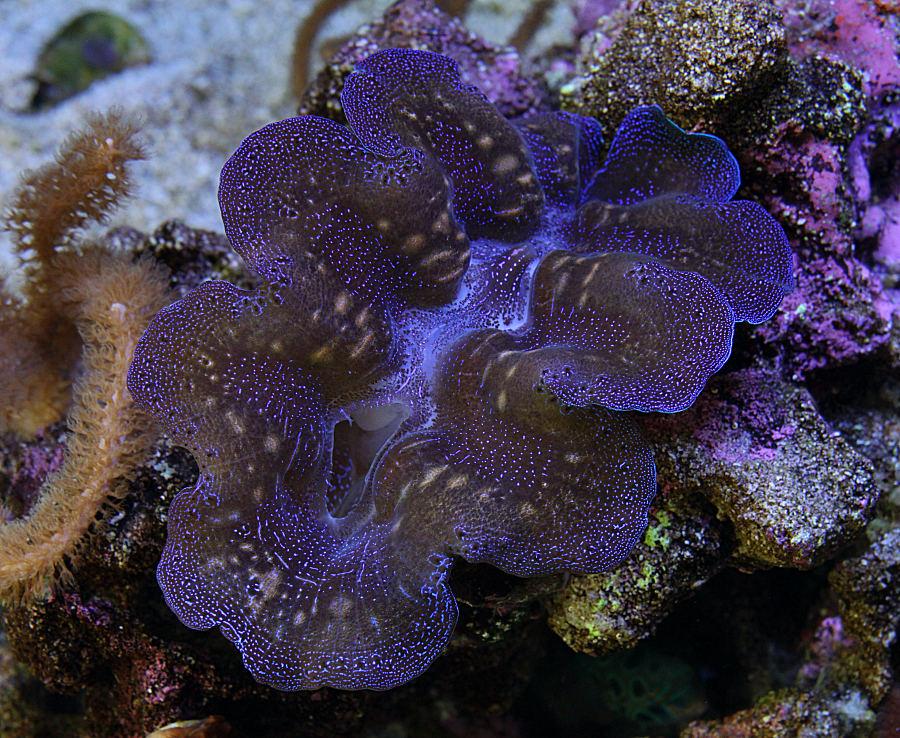

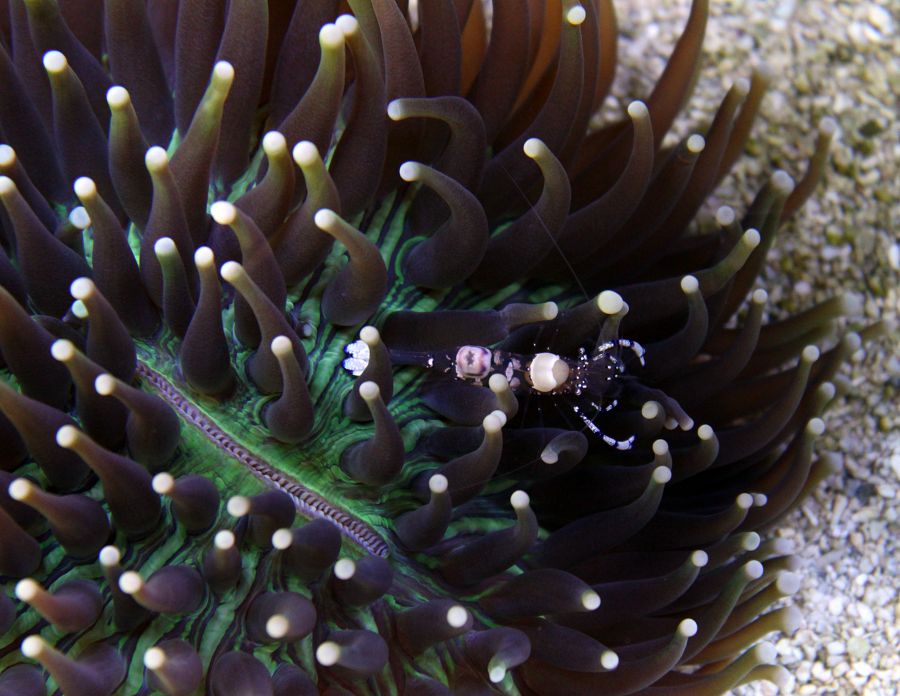
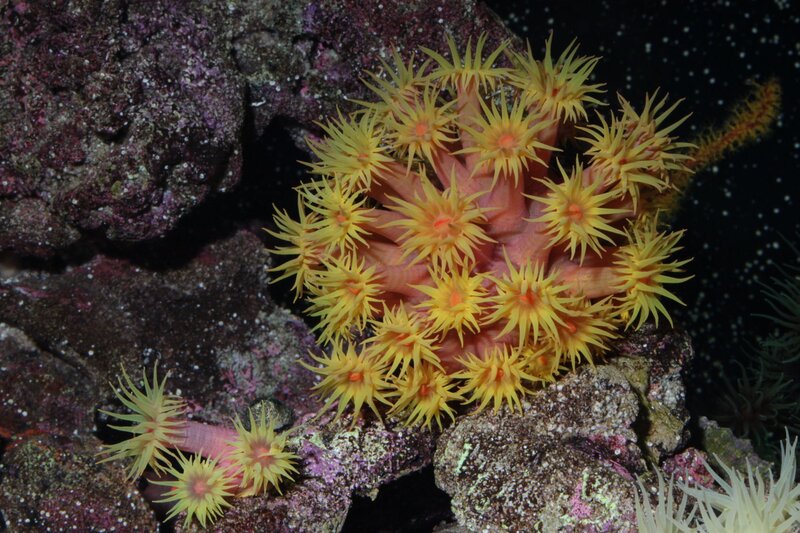
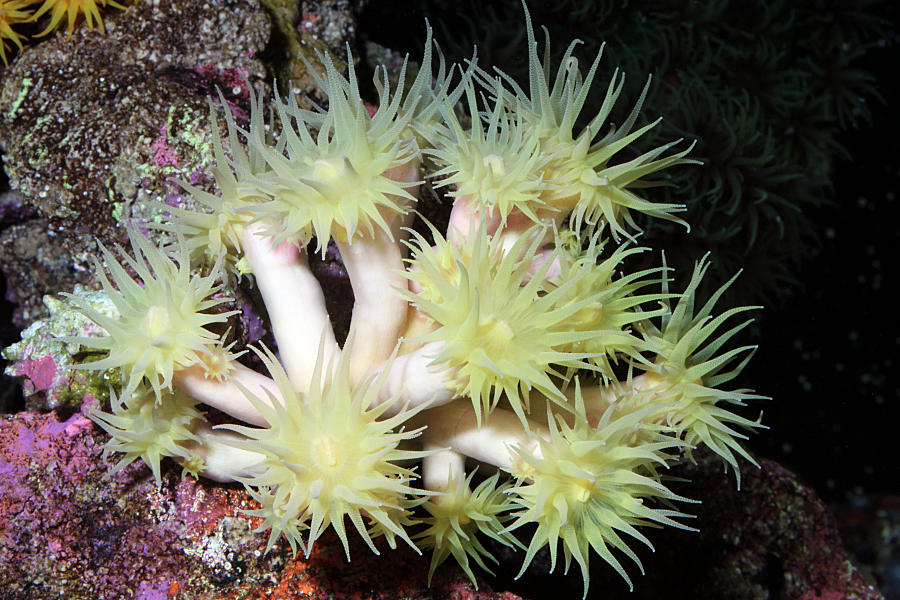
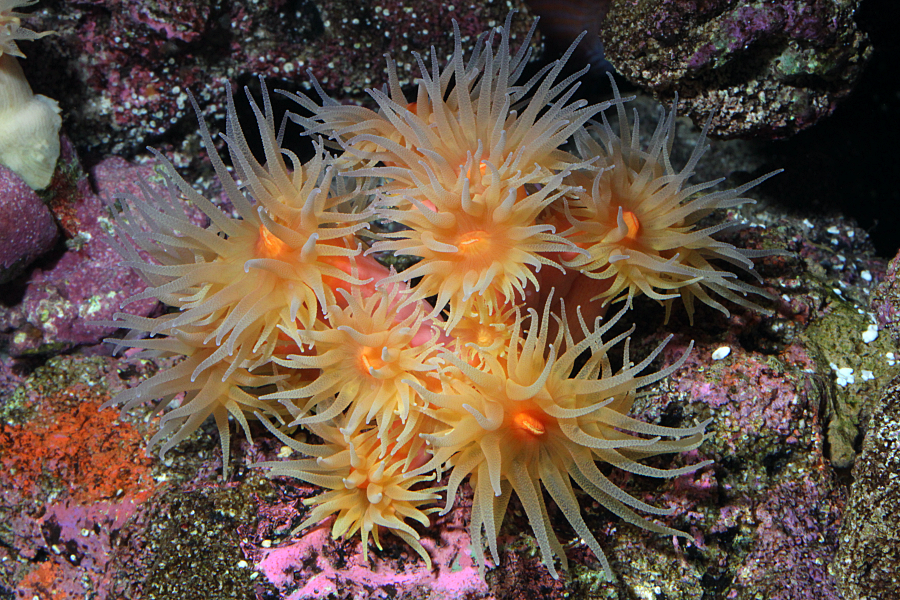
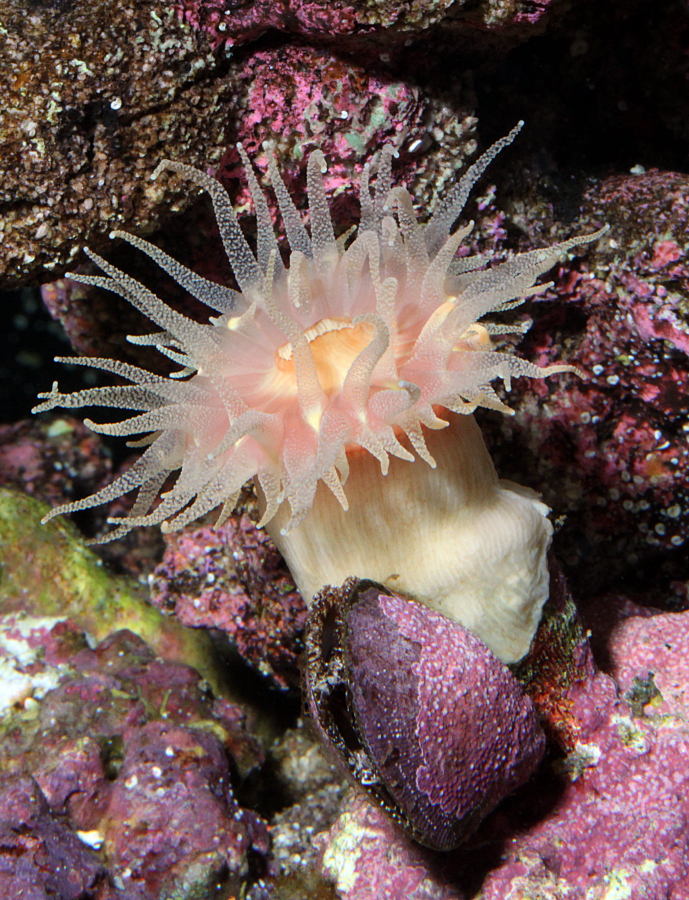
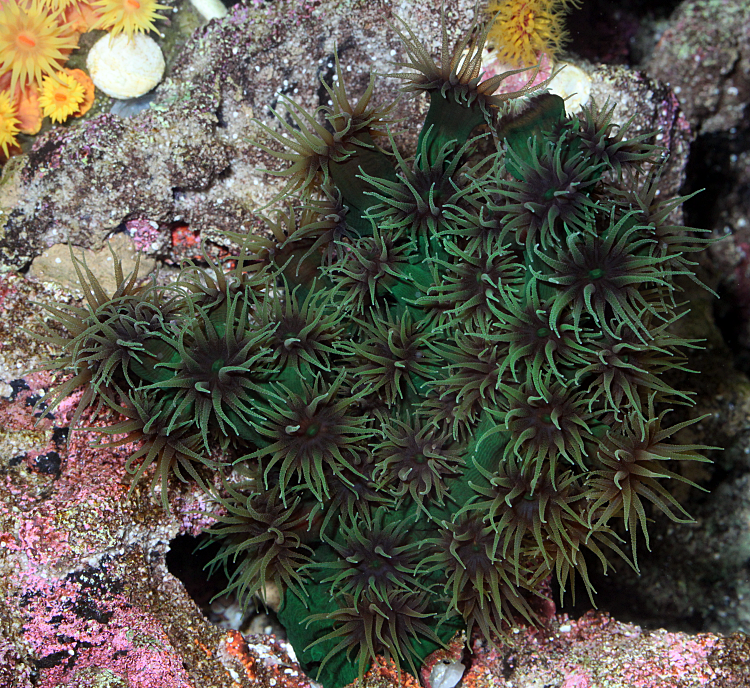
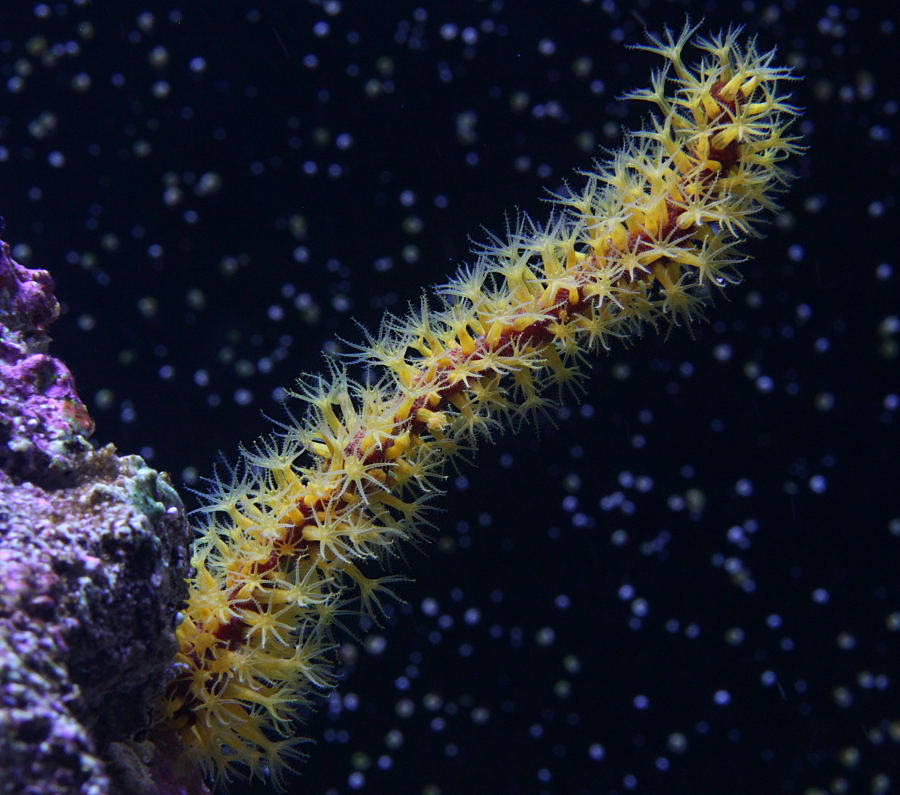
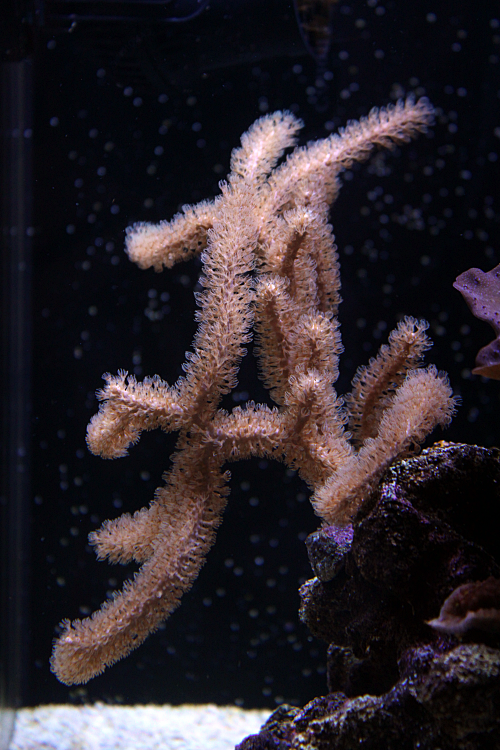
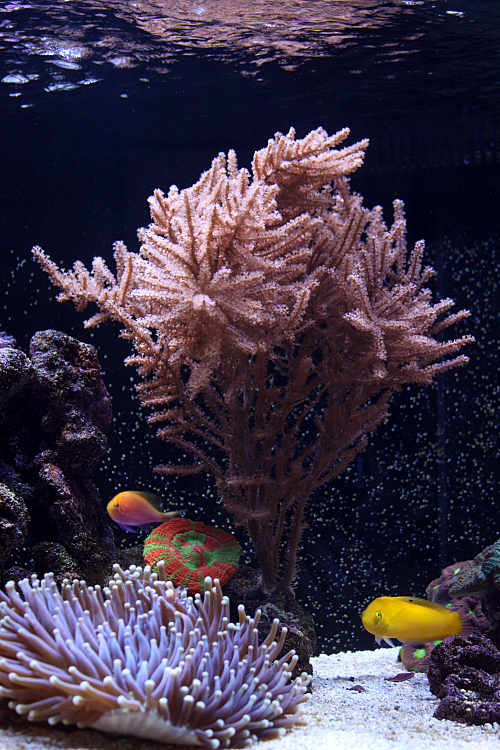
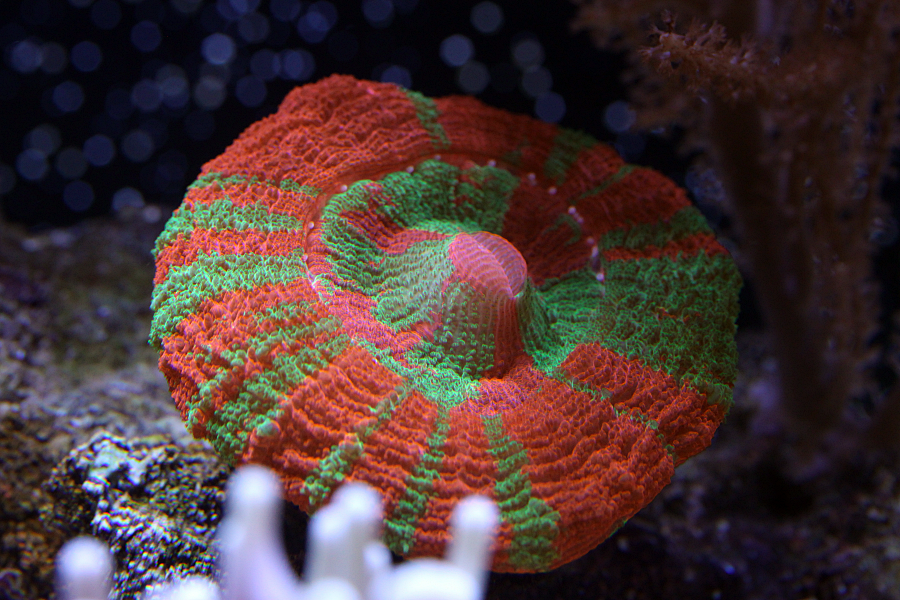
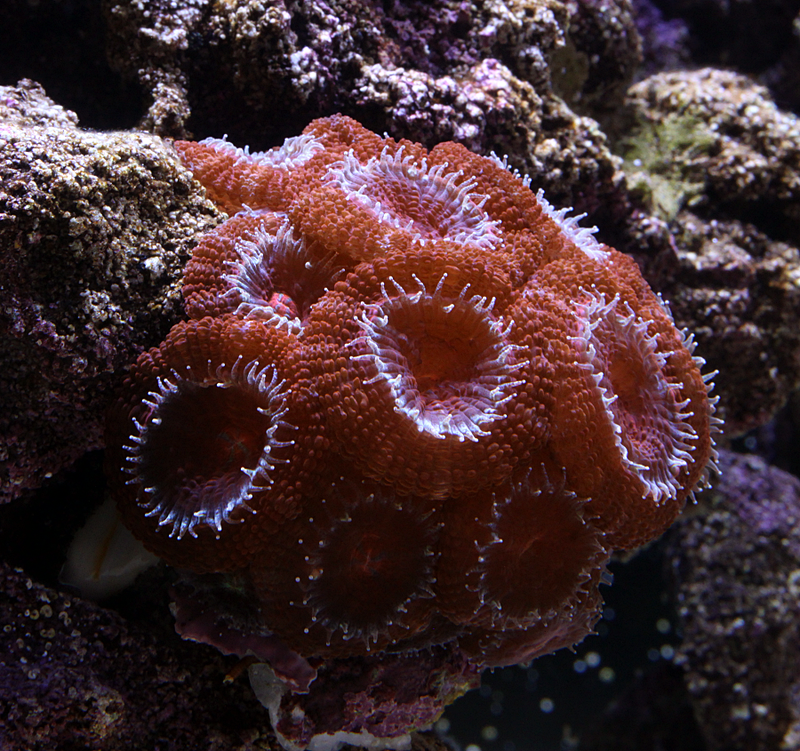
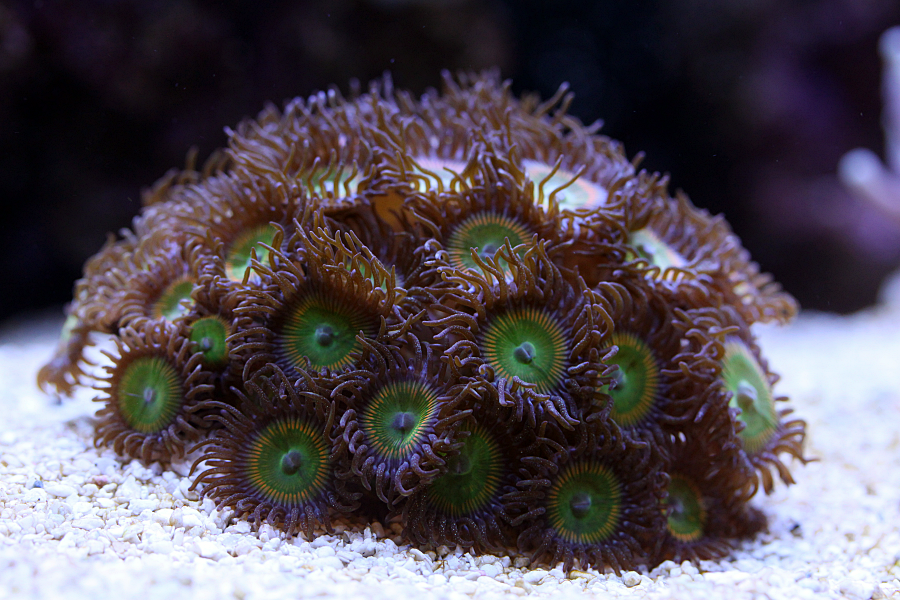
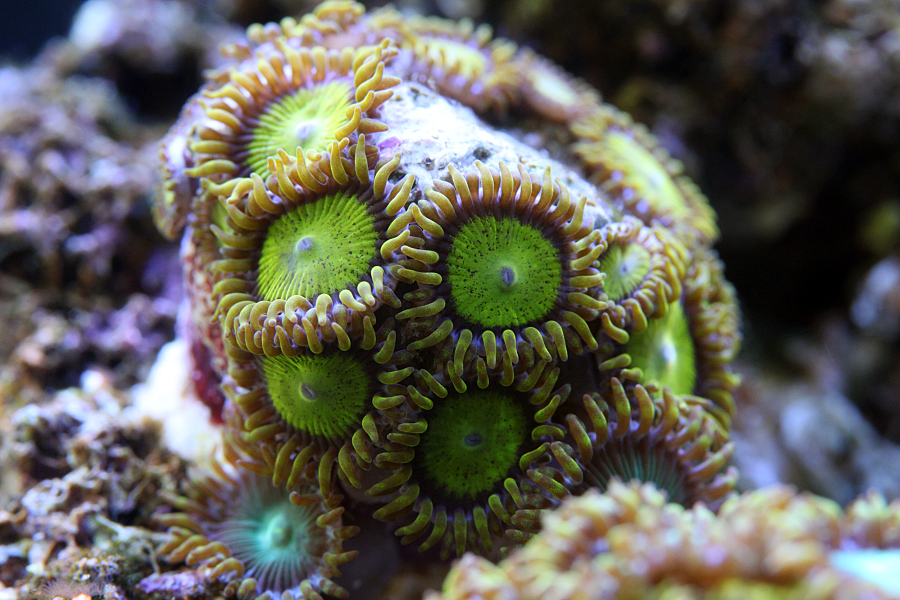
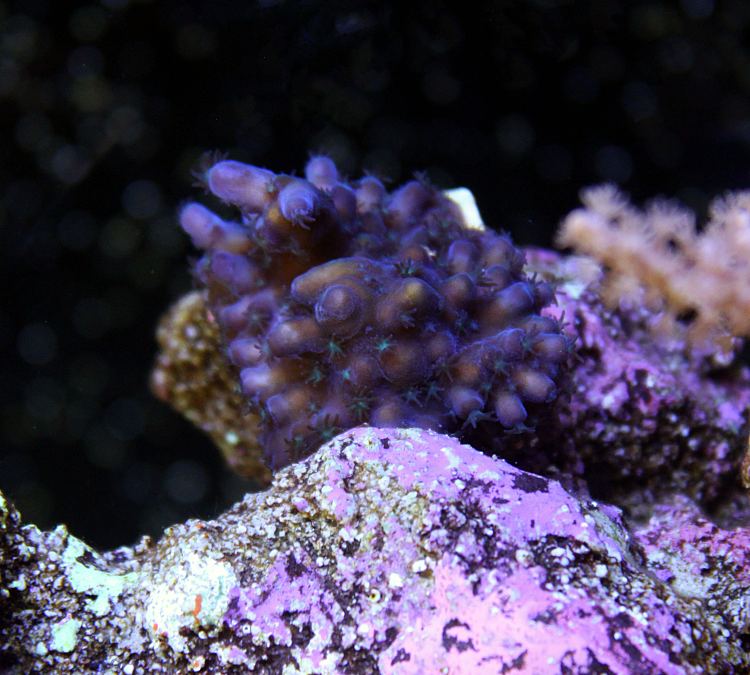
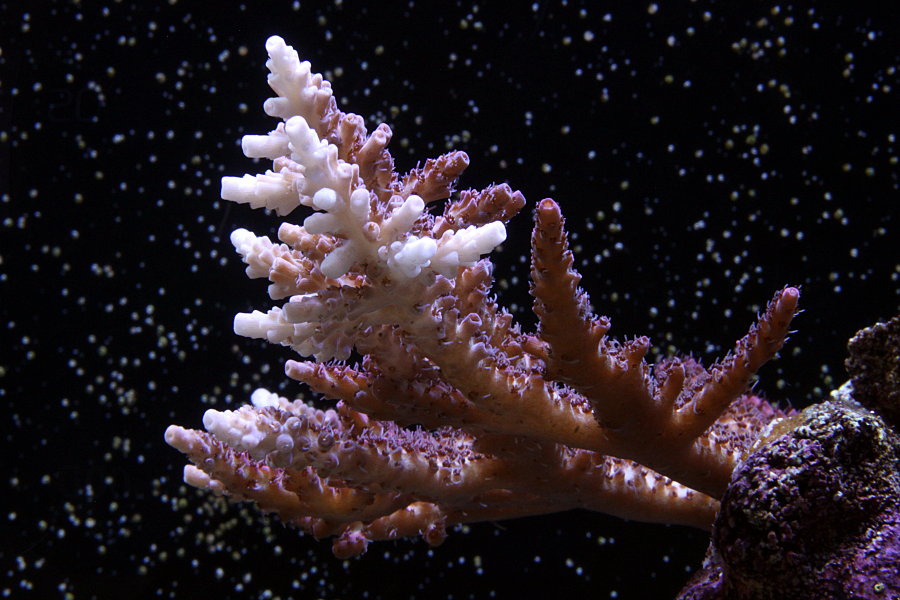
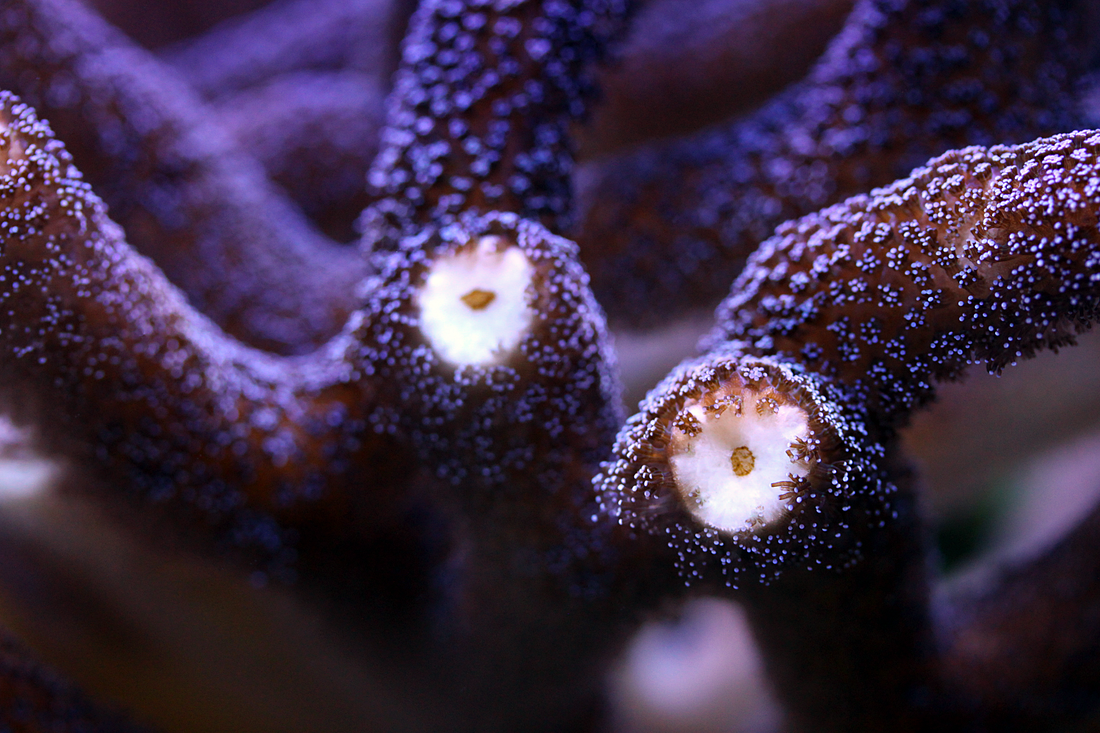
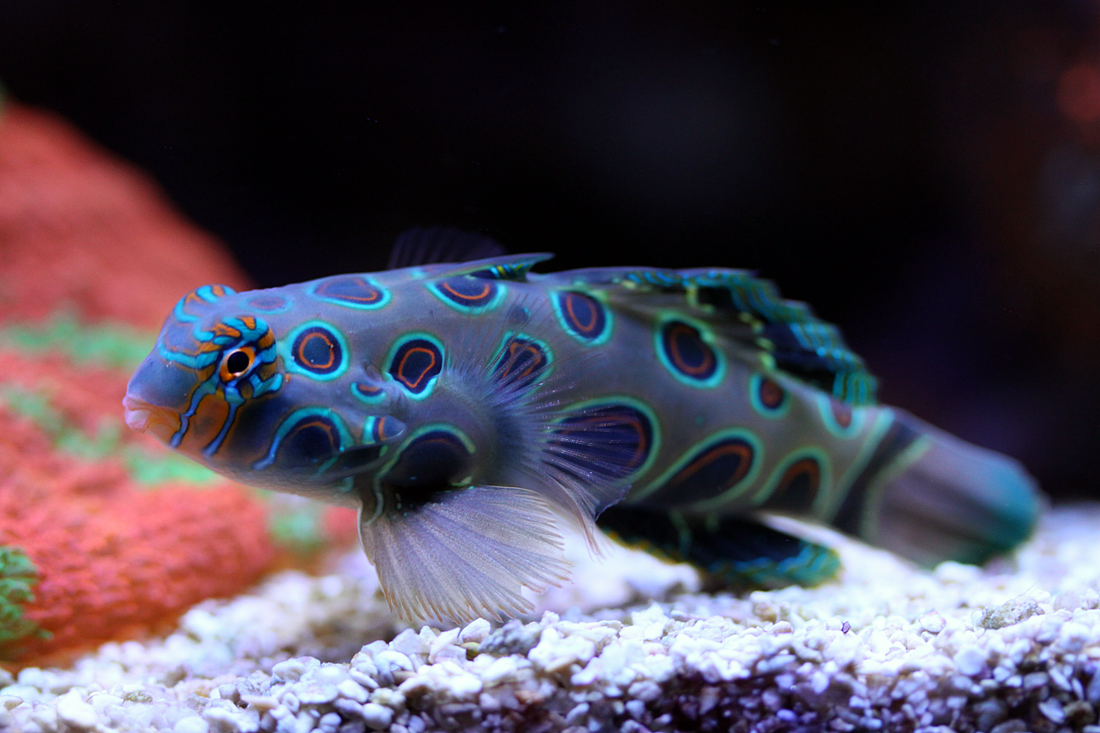
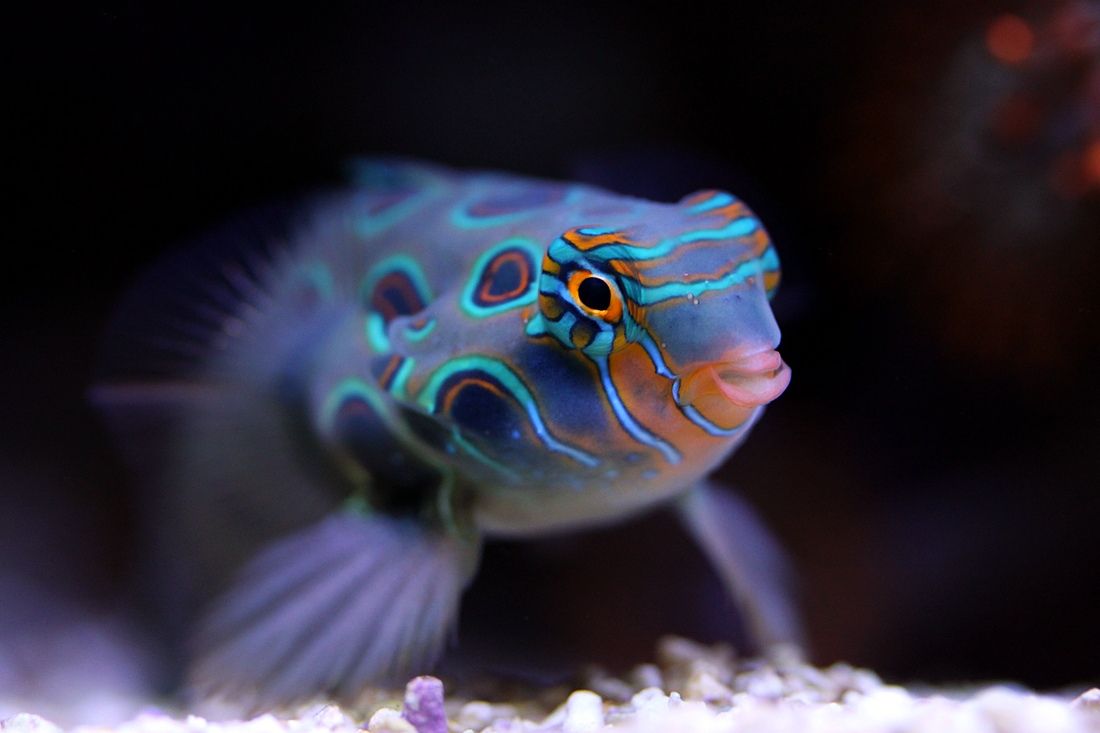
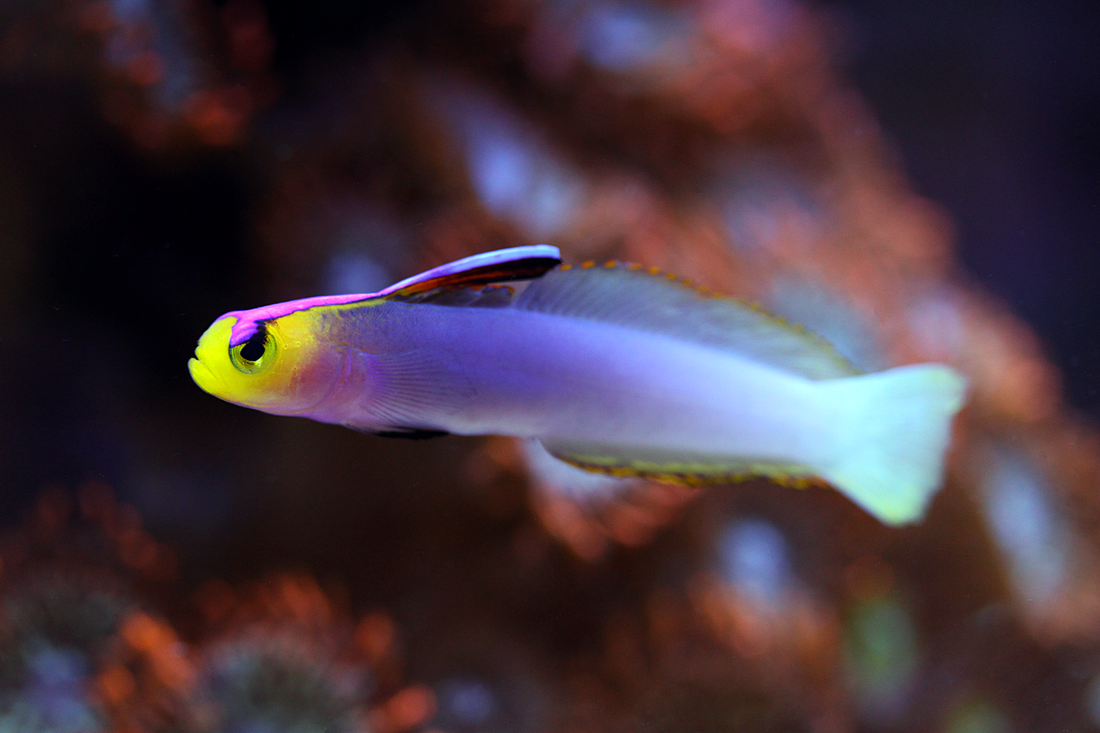
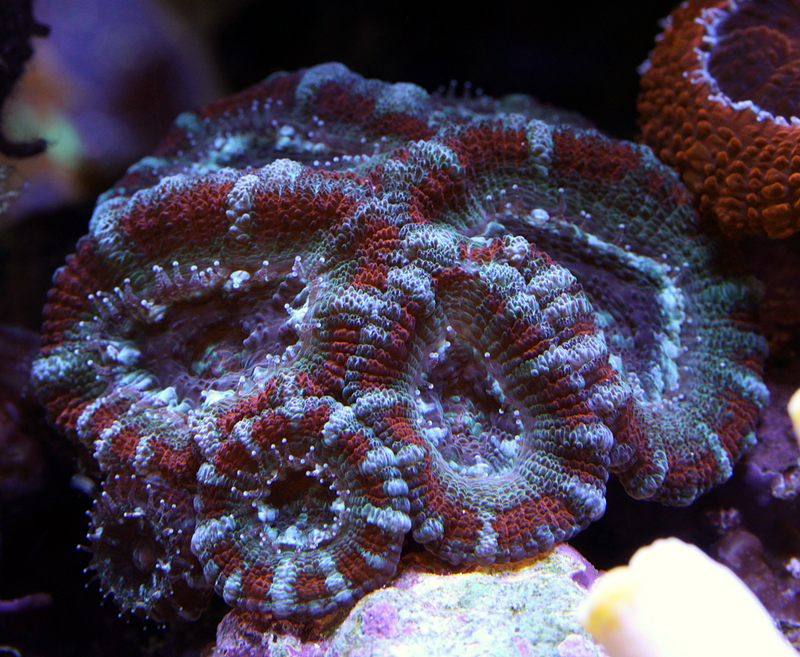
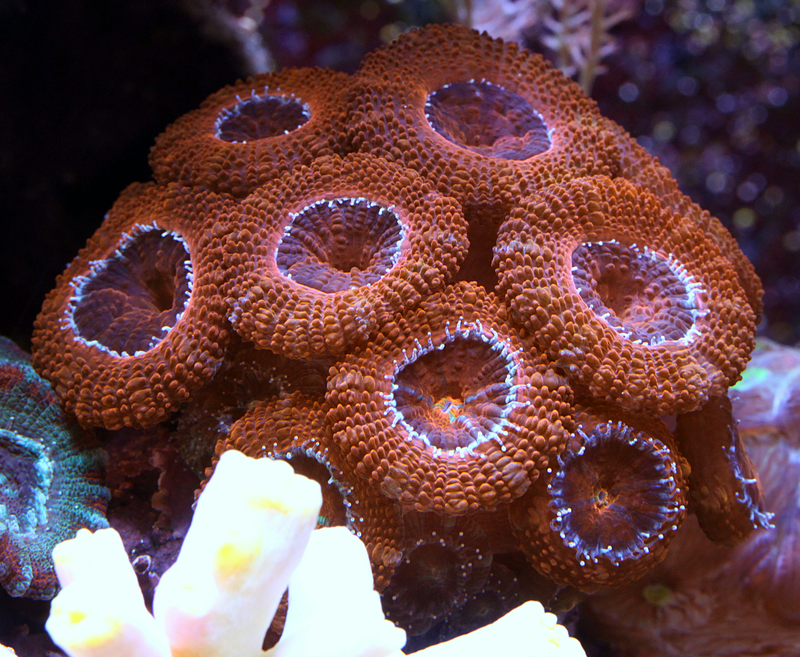
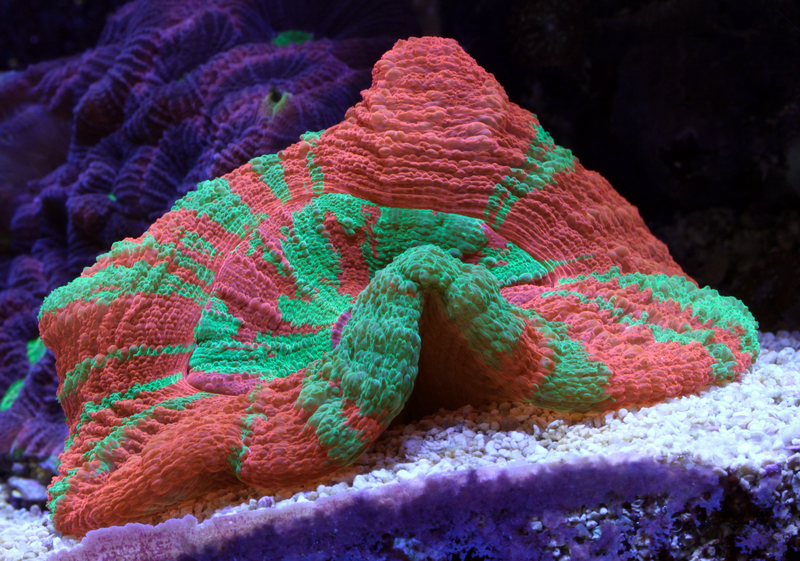
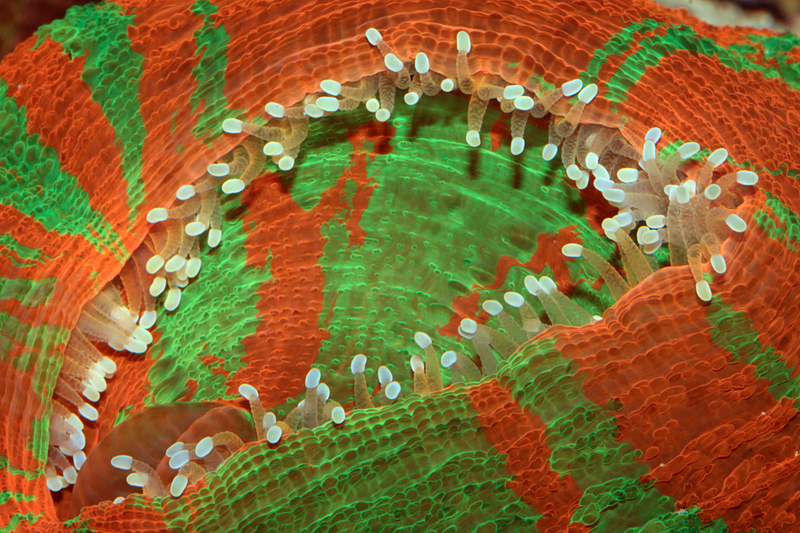
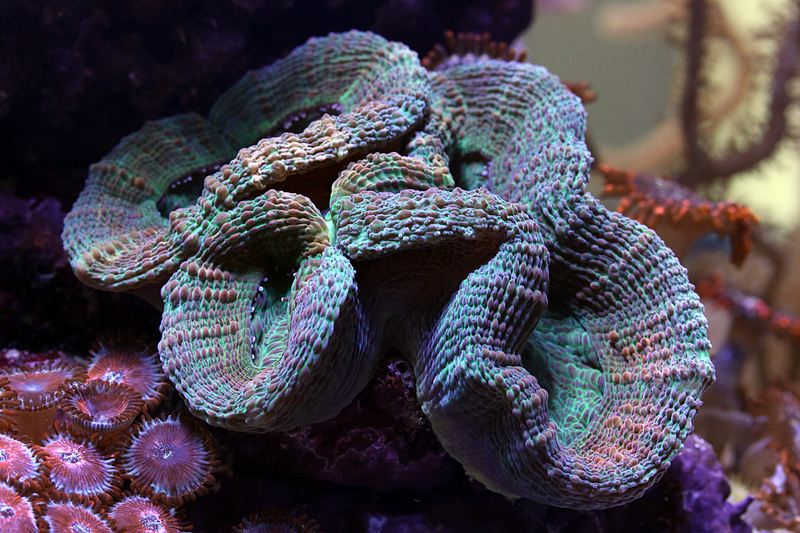
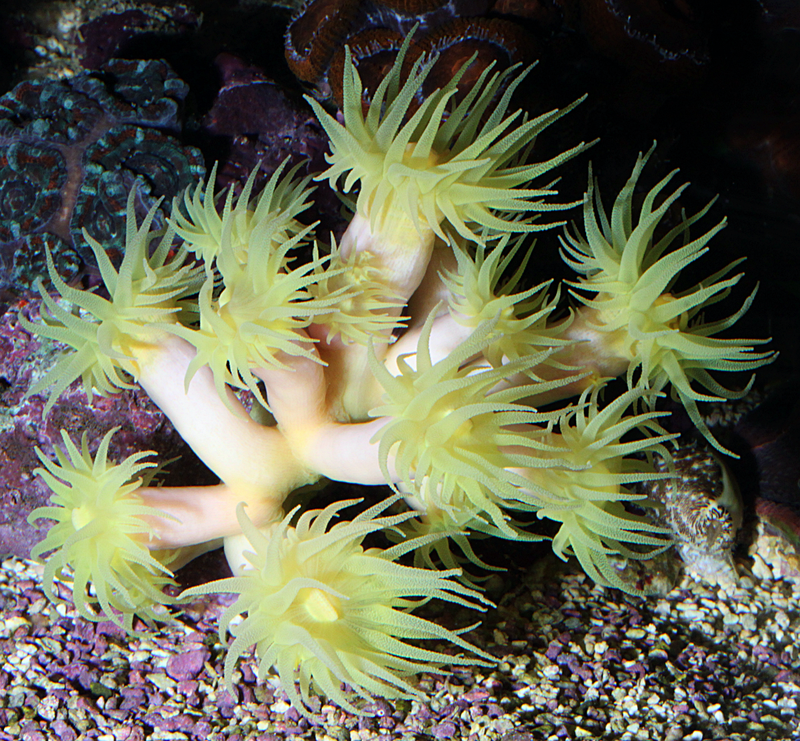
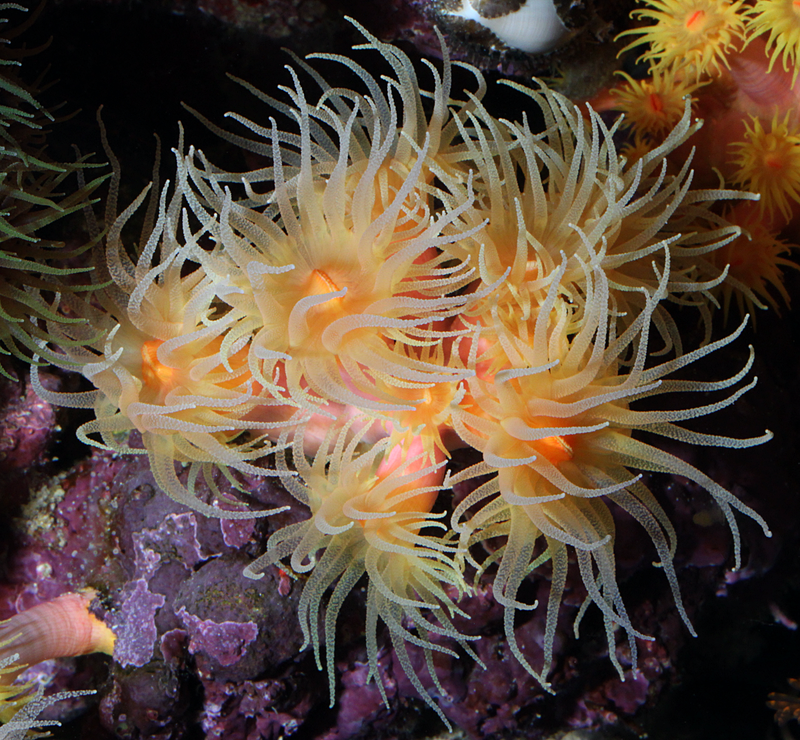
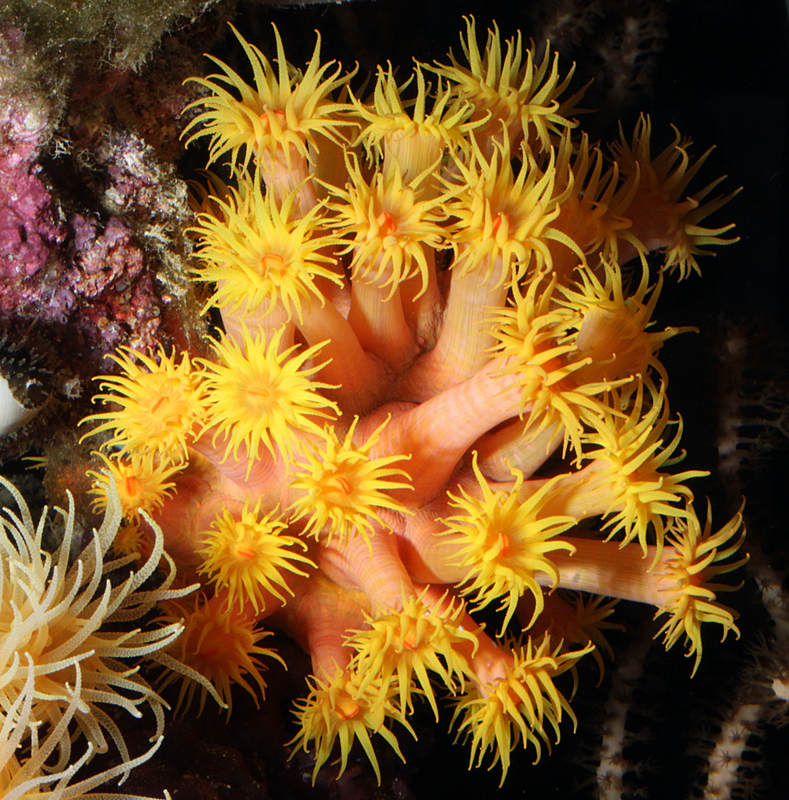
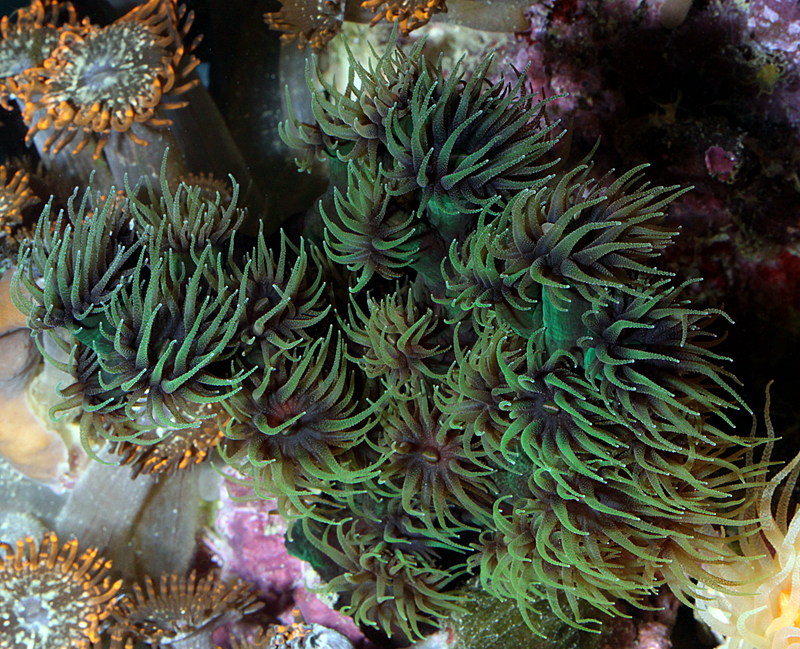
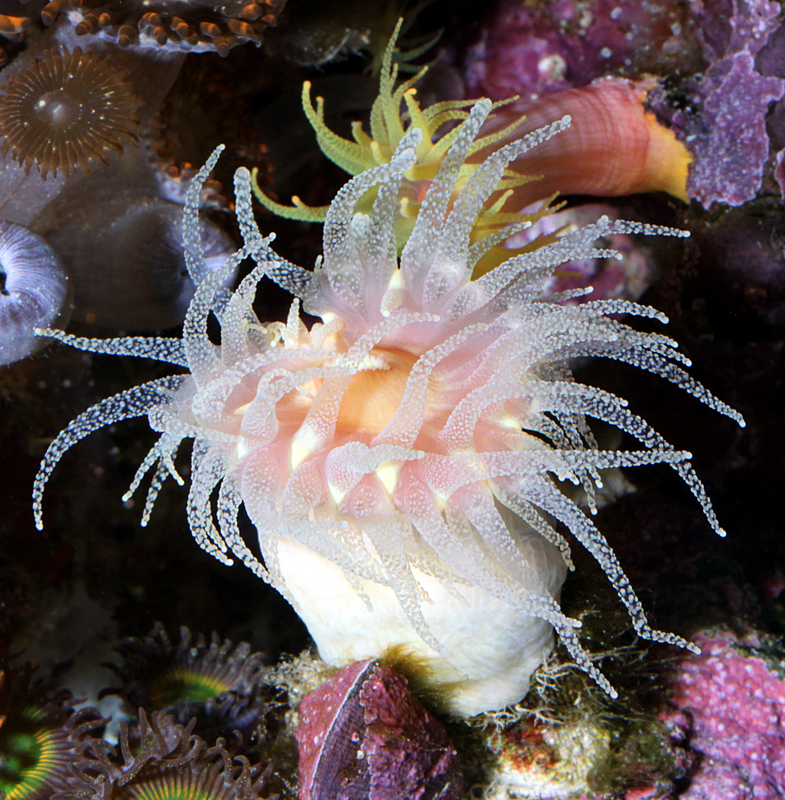
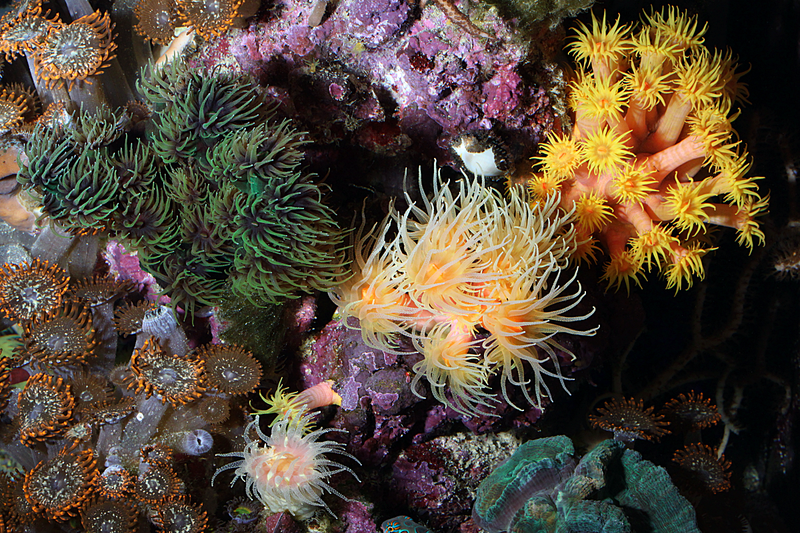
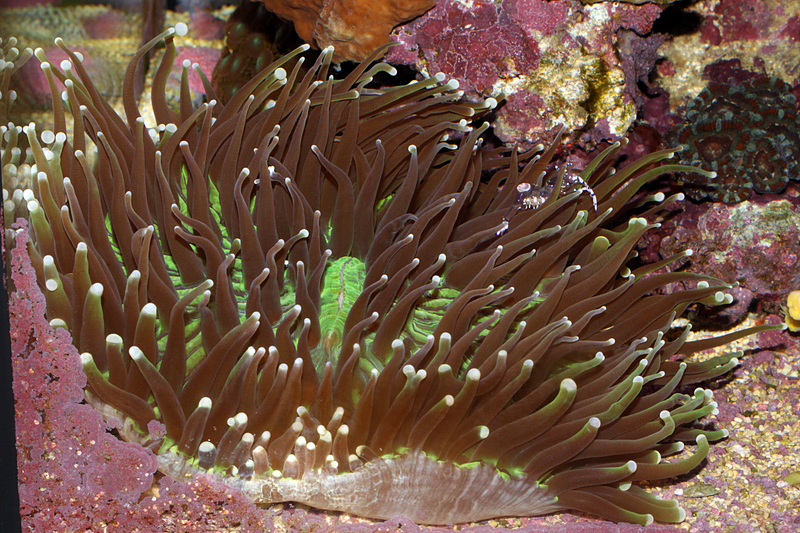
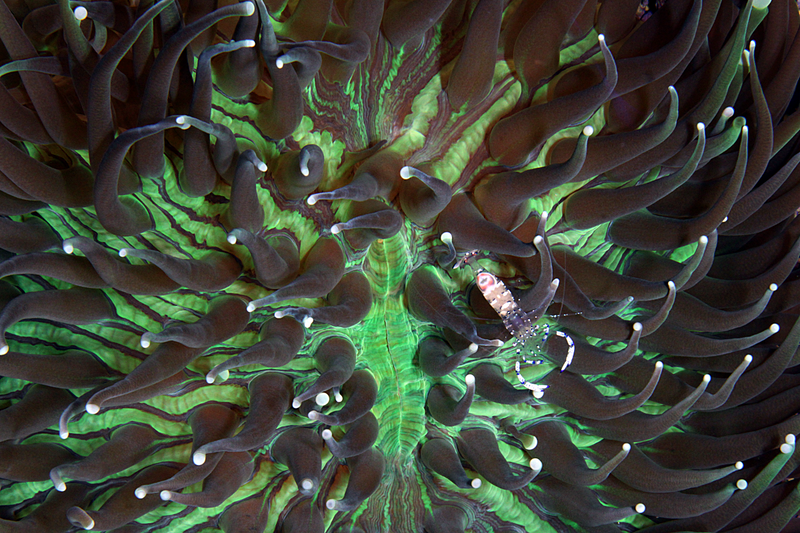
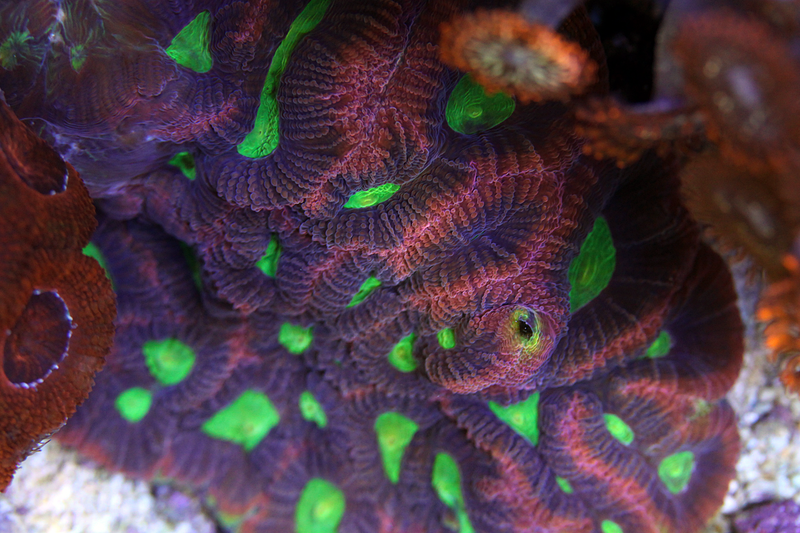
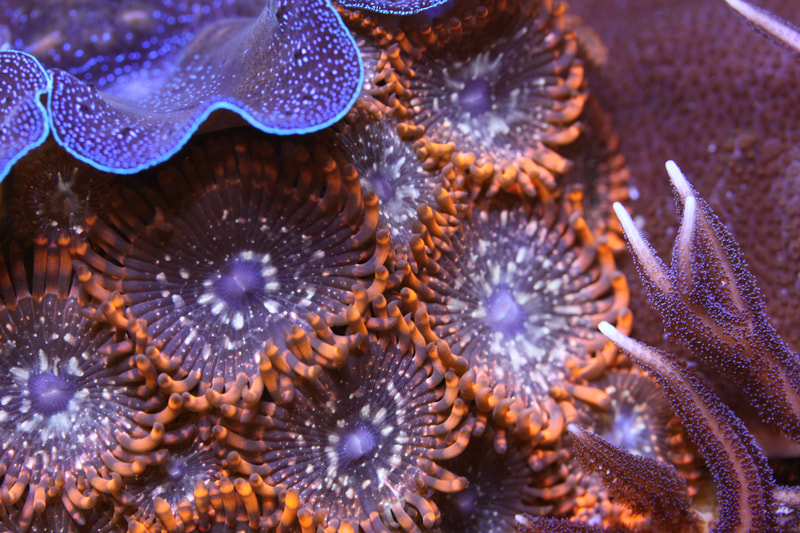
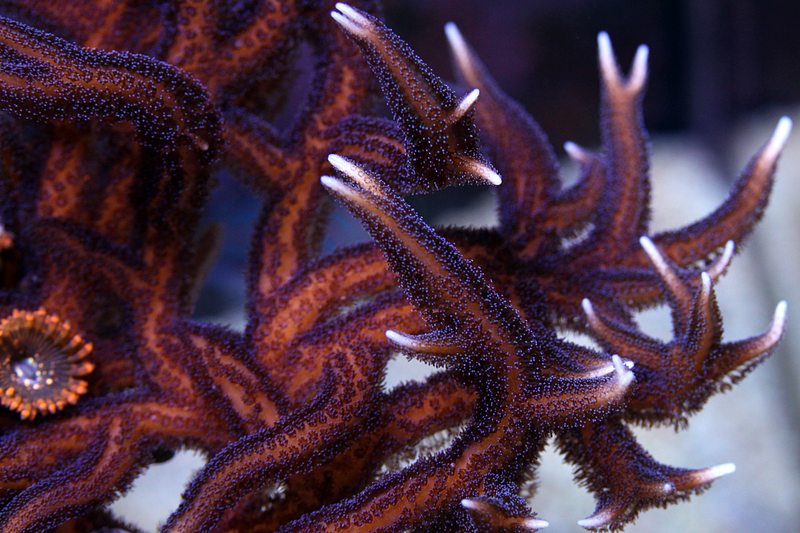
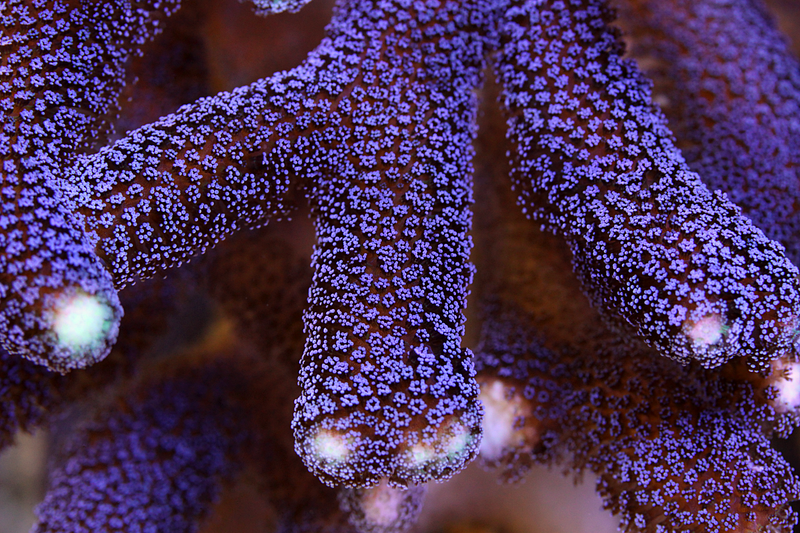
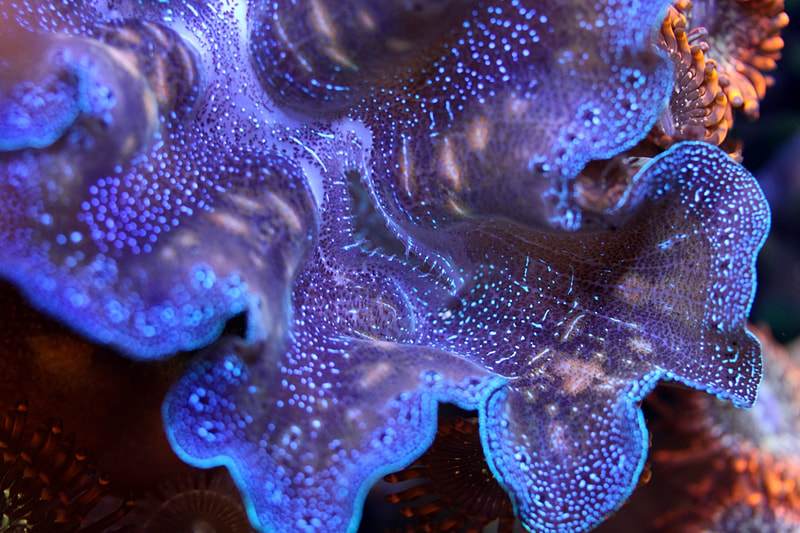
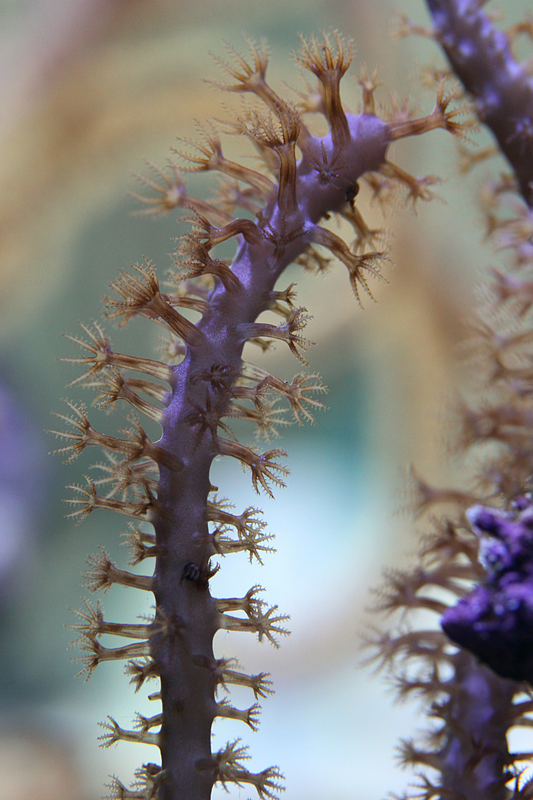
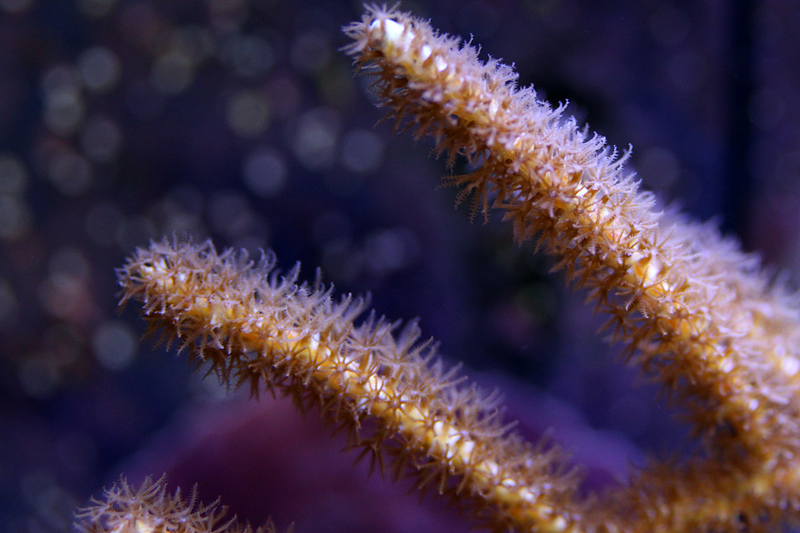
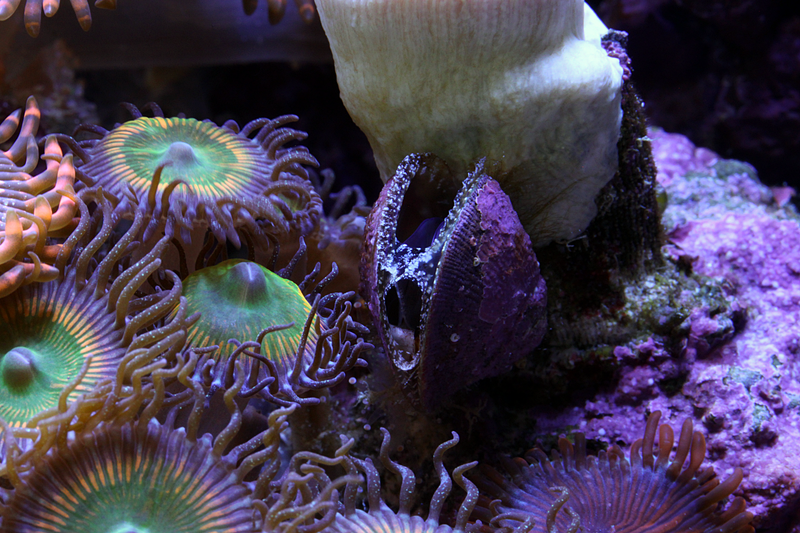
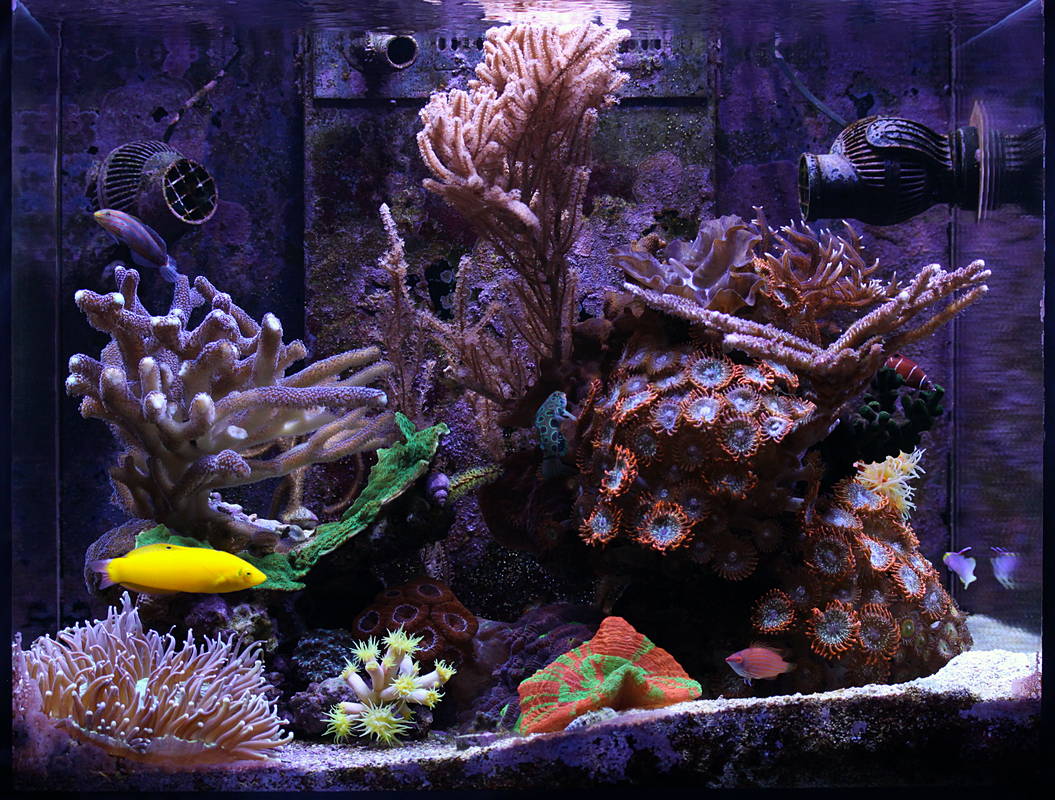
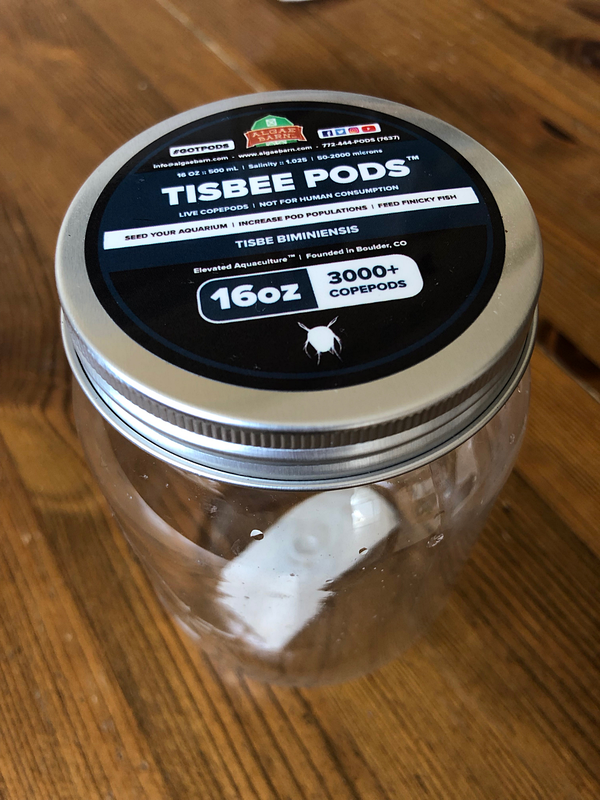
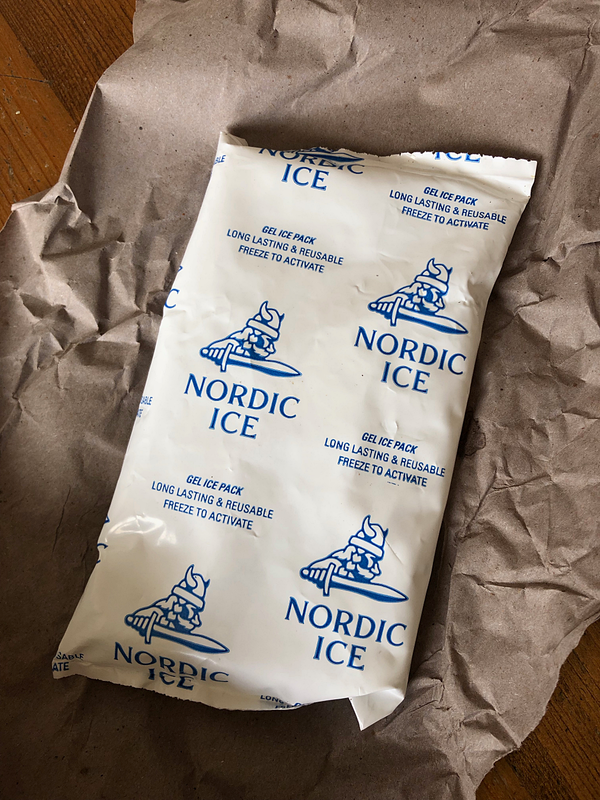
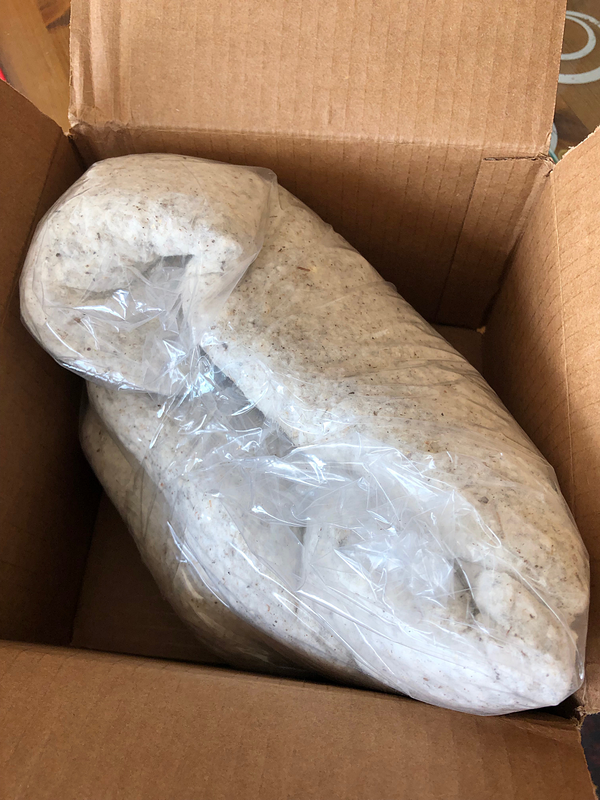
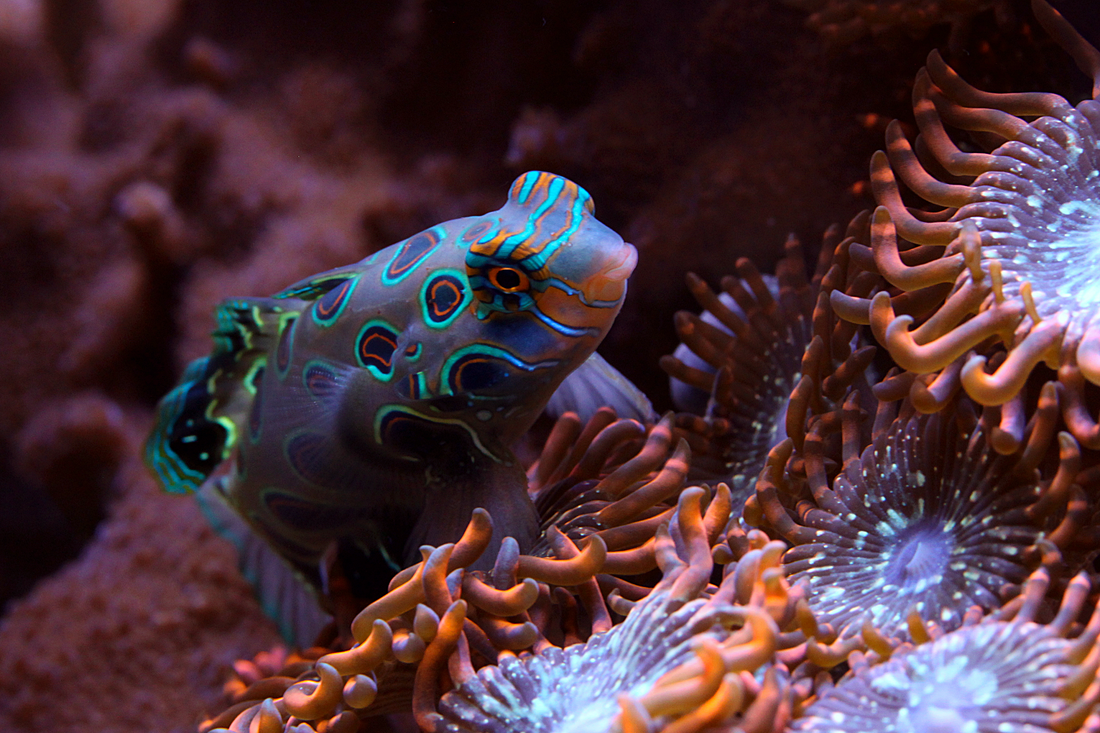
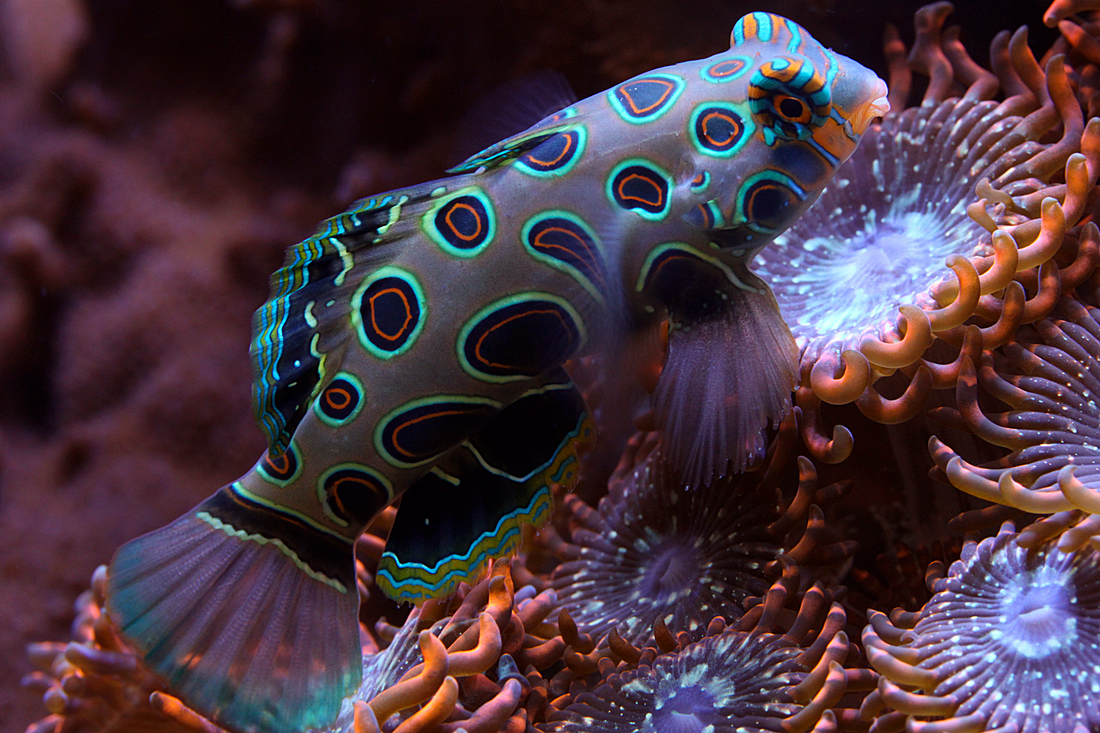
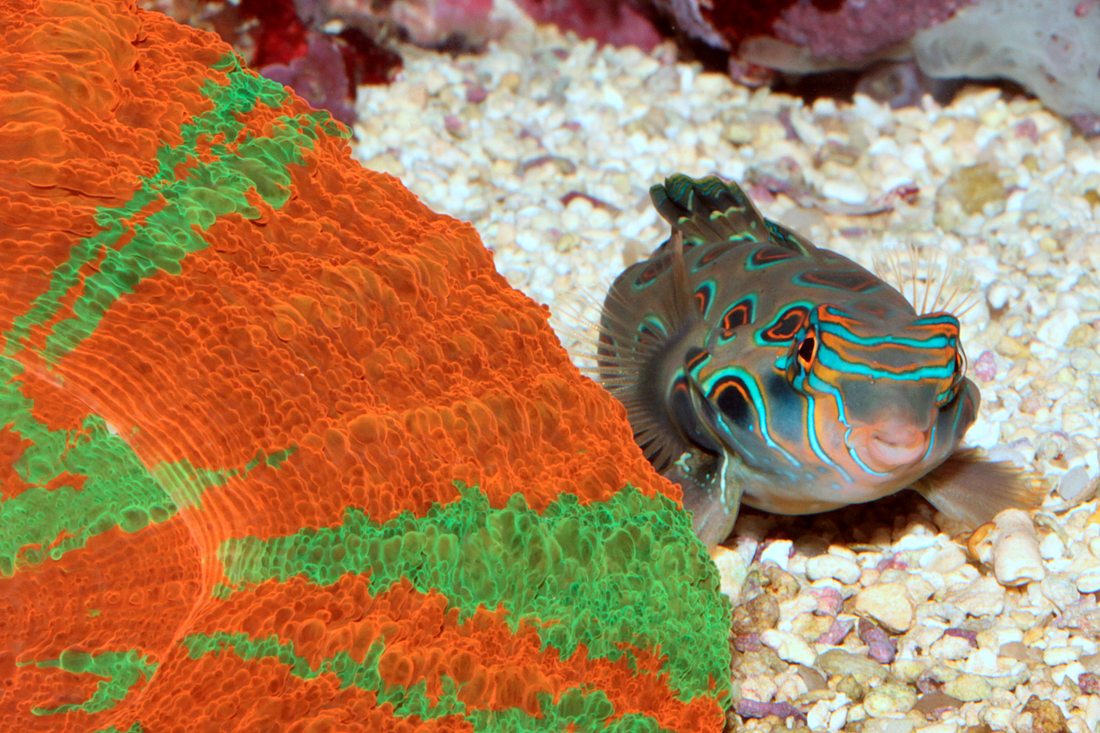
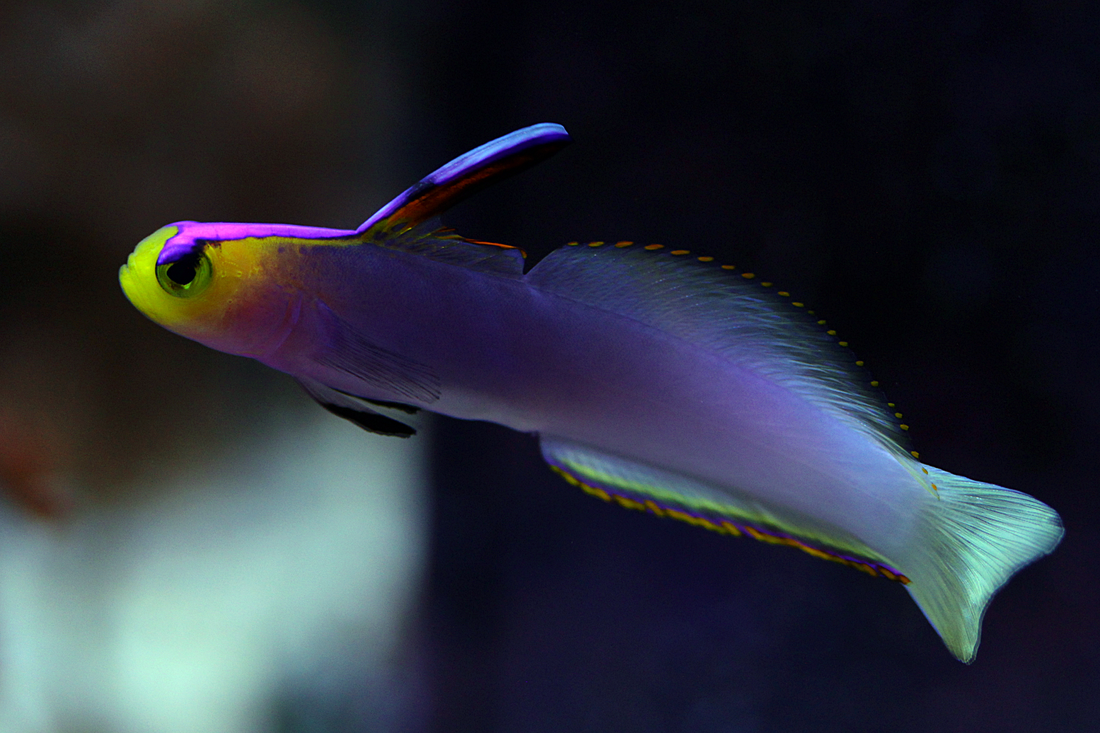
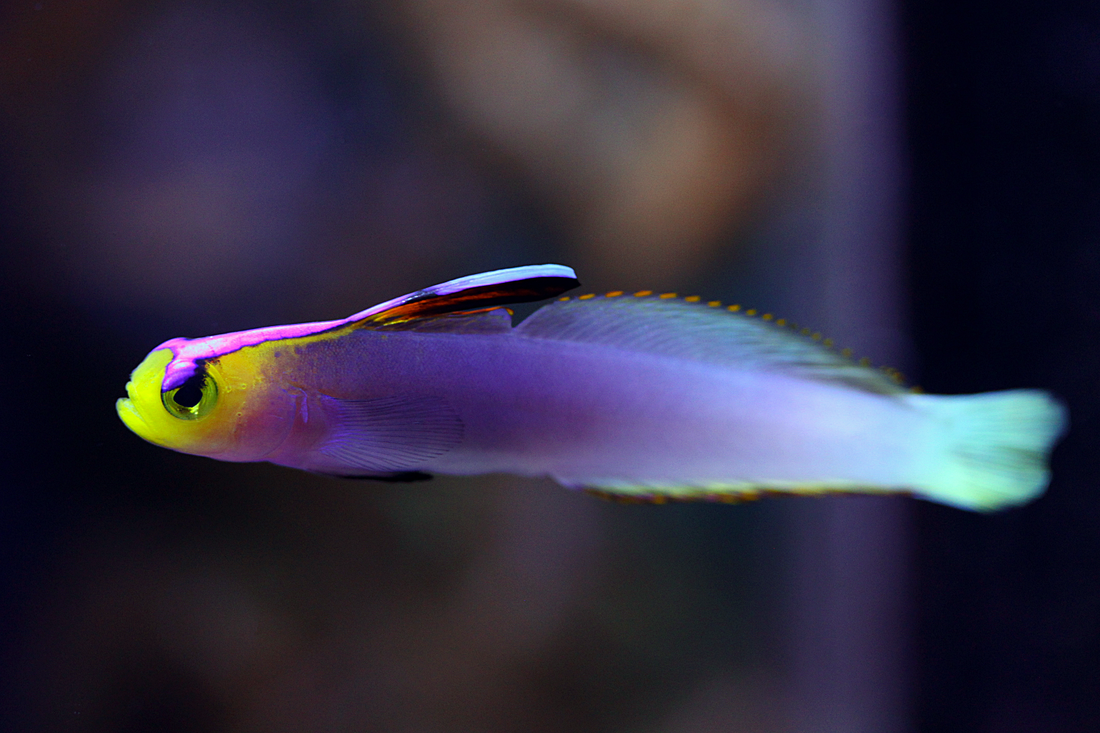
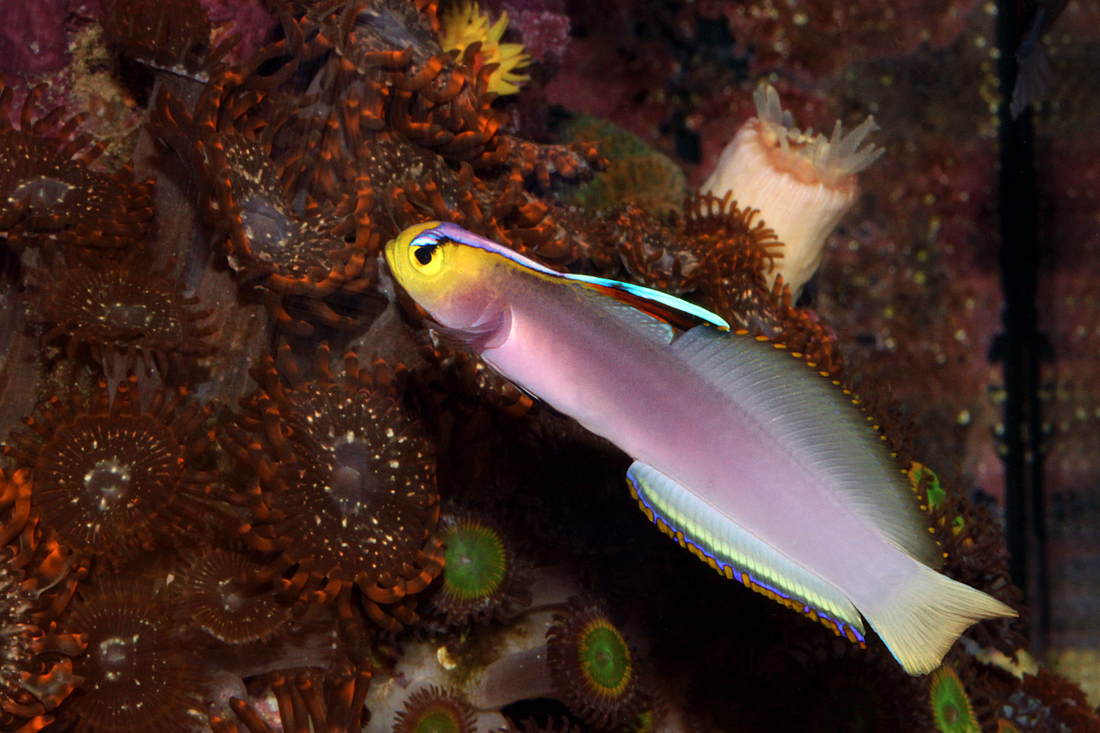
 RSS Feed
RSS Feed
